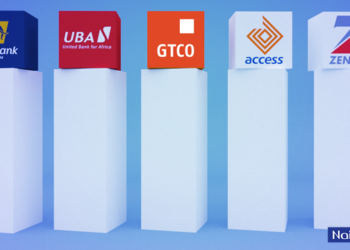In its 9-month financial results for 2023, UBA achieved 125% year-over-year growth in return on average equity, reaching 44.37%.
Combined with a return on average assets of 4.42% and a year-to-date share price gain of 173%, the highest in the banking sector, it reflects improved profitability and efficiency, and is likely to sustain positive investor sentiment.
UBA’s impressive ROAE AND ROAA indicate that shareholders are realizing a significant return on their investment in assets or equity.
The bank attributed this performance to the growth in profit before tax. The Group Managing Director/Chief Executive Officer, Mr. Oliver Alawuba, commenting on the Group’s Q3 results said:
- “I am particularly excited by the 263% YoY growth in profit before tax, which has helped to drive increased returns to shareholders, with a 44.4% ROAE, compared to 19.7% achieved as of December 2022.”
Additionally, UBA reported an outstanding 287.18% YoY growth in profit after tax, reaching N449.296 billion, making it the leader in the banking sector in terms of profitability.
The bank also explained that the bottom-line performance is founded on continuous improvement and growth in gross earnings and balance sheet size.
While the bank’s gross earnings grew by 115% year-on-year to N1.309 trillion, total assets went up by 49% to N16.236 trillion from N10.9 trillion as of December 2022.
It also highlighted that the growth in gross earnings was driven by 56.8% growth in net interest income and 3.36x growth in non-interest revenue.
However, it is important to note that the non-interest income, driven by FX gains, may experience a decline, given the 92% successive quarter drop observed in Q3.
In Q3, the bank reported foreign exchange gains of N31.975 billion, a notable decrease compared to the impressive N418.278 billion recorded in the first half of 2023.
This decline in FX gains had a moderating effect on net trading and foreign exchange income, resulting in a total of N450.253 billion for the first nine months of 2023.
This expected decline could have an effect on both the top line and bottom line in subsequent periods. Notwithstanding, the 9M performance may see the bank exceed its 2023 provided guidance and is likely to enhance investor confidence.
In 2022 full year, the bank recorded 19.7% and 1.76% return on average equity and return on average assets respectively.
For the 2023 full year, it aimed to achieve a 20% return on average equity and 2%return on average assets. With the 9M return on average equity of 44.37% and return on average of 4.42%, the bank is set to exceed its guidance, despite the expected revenue shortfall due to a decline in FX gains.
Moreover, the bank’s 9M financials highlight robust midline performance, specifically in its key lending operations, with an 11% YoY growth in net interest income after impairment charges and a 5.2% increase in net interest margin.
This suggests that the bank is earning a higher proportion of income from its interest-earning assets. In alignment with this observation, the bank explained that the material increase in net interest income was on the back of a 47.6% expansion in the bank’s interest-earning assets.
This achievement becomes even more noteworthy, considering the bank’s more conservative approach in provisioning for potential losses as reflected in the substantial 964% year-over-year growth in impairment losses, which reflected in the 498.7% increase in cost of risk to 4.07% in 9M.
Also, operational expenses were well-managed, evidenced by a 42% year-on-year decrease in the cost-to-income ratio to 36.44%. This control is crucial for sustaining favourable returns to shareholders.
UBA’s earnings per share (EPS) saw significant growth, reaching N12.93 for the nine months, a 294% increase year-on-year, and a trailing twelve-month EPS of N14.49. Q3 alone registered an EPS of N3.27, marking a 108.28% growth over the period.
With a year-to-date share price gain of 173%, the share price outpaces earnings, reflecting strong investor sentiment.
Currently, UBA’s stock offers an attractive dividend yield of 6.75%, higher than the average peer dividend yield of 4.5%. This implies that, based on the current stock price, investors could potentially earn a return of 6.75% through dividends.
UBA’s stock is currently priced attractively compared to its industry peers. With a Price-To-Earnings Ratio (P/E) of 1.4x, well below the peer average of 4.02x.
Additionally, the price-to-sales ratio of 0.30 indicates a market perception of undervaluation, reinforcing the idea that UBA’s stock is considered underpriced relative to its revenue.
With a strong return to shareholders highlighted by the bank’s impressive return on average equity and a robust total return of 179.75% represented by the combination of share price year-to-date gain and dividend yield, UBA appears as a compelling investment opportunity
To sustain this appeal UBA must continue to be resilient and committed to delivering value and enhancing the confidence of its customers, stakeholders and the wider public, notwithstanding the competitive landscape and current global trend in the industry.
























All the top tier banks that raked in huge windfalls from foreign exchange revaluation in 2023, are expected to experience a significant decline in their 2024 financial performance when compared to the current year, since the currency revaluation is a one-off situation. But, I think some top banks still need to raise their dividend payment, especially UBA and Access bank to somewhere close to their peers in the trillion naira market capitalization region.